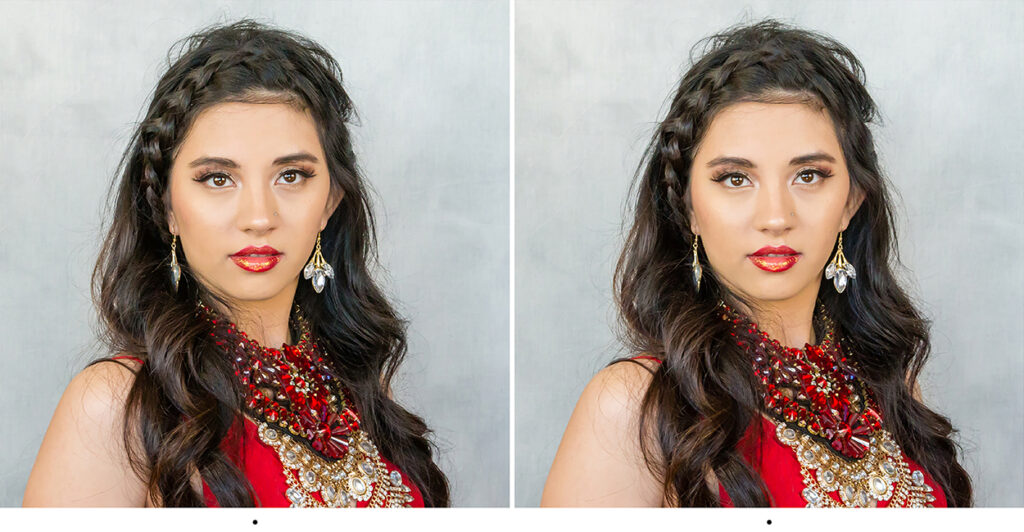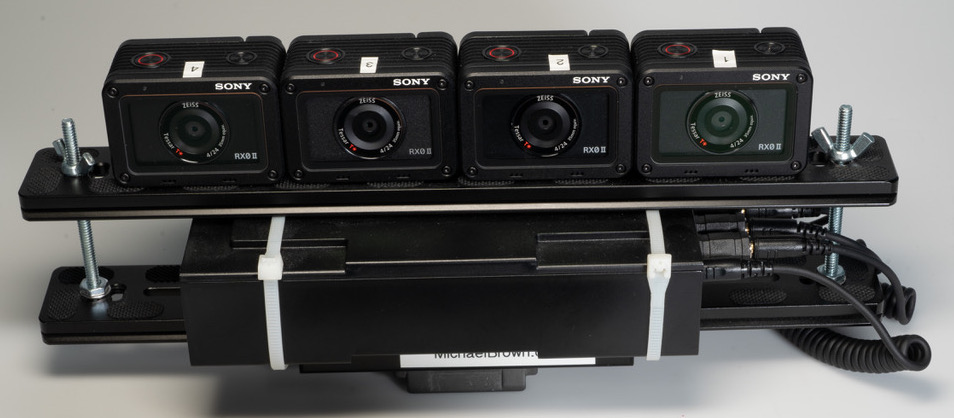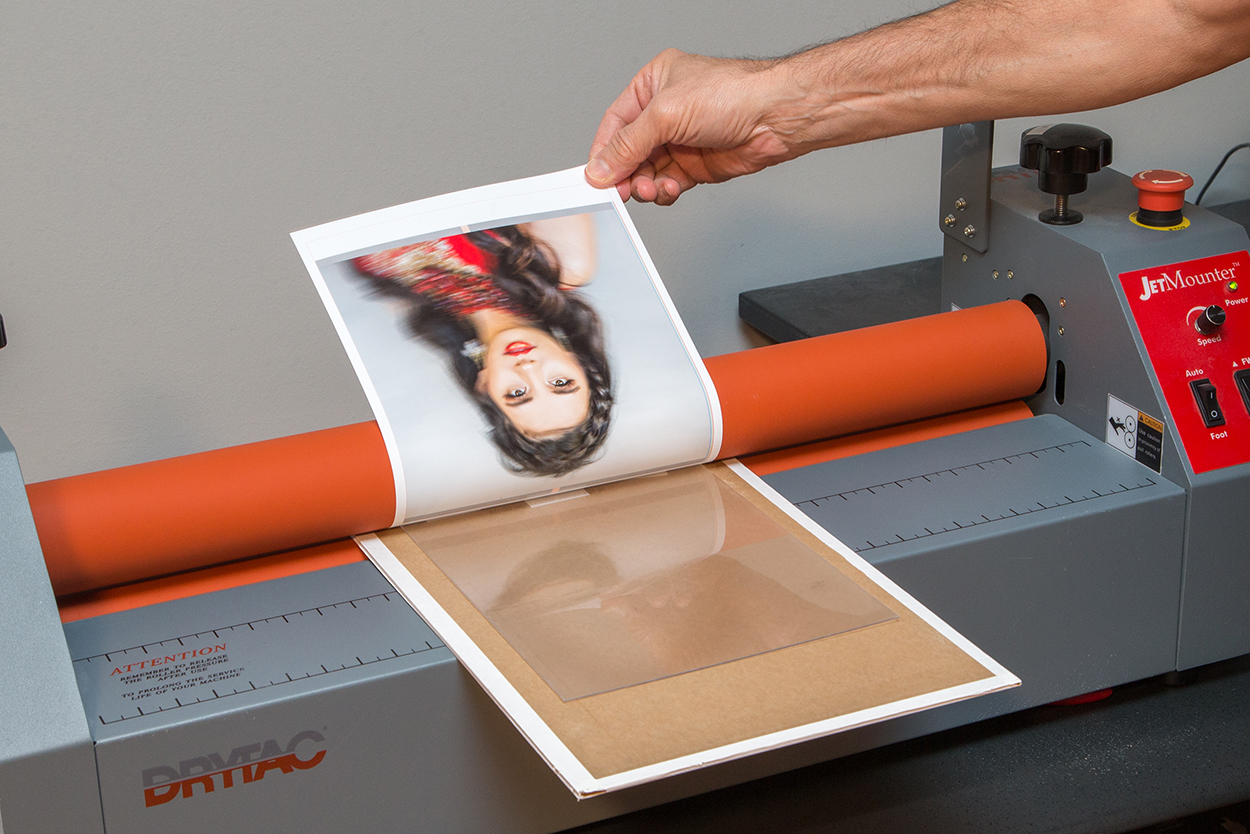Multi-Frame 3D Photography
written for the stereosite by Michael Brown, USA
Classic stereo photography generally consists of a pair of exposures taken from two separate positions corresponding to the views that would be seen by each of the two eyes. Image pairs have traditionally been viewed using a stereoscope or alternate methods that could include 3D glasses (anaglyph or polarized), or free viewing (parallel or cross eyed).
In the early part of the last century researchers worked to create techniques that would allow for creating 3D pictures that didn’t require stereoscopic viewing aids. Pioneers such as Lippman, Ives , & Kanolt created what we now refer to as 3D Lenticular photography. These scientists and others experimented with dual images, image sequences, black/clear barrier techniques, fly’s‑eye lenses, and many other approaches. Ultimately, the most practical method for creating auto-stereoscopic prints utilized a frame series taken from different horizontal positions, and a clear lenticular lens sheet utilizing vertical lenticular elements.
Lenticular photographs can be viewed the same way as ordinary photos, but they show the added dimension of depth. No stereoscope or 3D glasses are required for viewing. This ease of viewing is the biggest benefit of the lenticular print. If only two stereo views were used for a lenticular, the print would have to be held at a very precise distance and precise angle to be seen. By adding more viewpoints, the prints are easily viewed from a variety of positions and angles. That is why lenticulars are created with more than two stereo viewpoints.
I became interested in 3D Lenticular photography in 1982 when I read about and later purchased a Nimslo 4- lens 35mm camera. The Nimslo was a 35mm film camera that captured 4 pictures occupying the space of two standard film frames. After the film was exposed, it was sent to a photofinishing lab for development and printing. There was no method in the 1980s for printing your own Nimslo negatives.
Around 2005, I learned that digital image processing had advanced to a point where it was possible to make lenticular prints with desktop inkjet printers. Lenticular lens sheets were also now commercially available in small quantities. Using information gleaned from the Internet, I began my experimentation. Although I could scan the four film frames made with a Nimslo camera to make a 3D lenticular print, I decided I would rather capture my photos with a digital camera.
I now use two techniques for my 3D lenticular photography. My primary approach is to mount a digital camera on a one-meter slide bar and shoot a sequence of frames as I moved the camera from one side to the other. There is nothing magical about the one-meter length. It works fine for my portrait subjects that typically sit about 2 — 3 meters from my camera. Close up subjects require less horizontal offset and distant subject more. My camera has a burst depth of about 70 frames before the buffer is full. I generally use a subset of those frames (typically more than 10 and fewer than 40). The number of frames I use relates to the size of the finished print, the observer’s viewing distance, the viewing angle of the lenticular lens sheet, and whether sharpness or depth is more important in the finished result. Typically, the total base between the first and last exposure is generally 3–6 times the normal base for classic stereophotography. So for studio portraiture, using a camera on a slide bar, I generally move the camera about 15 inches from one side to the other.
My second approach is to use four small Sony RX0ii cameras mounted on a bar which allows me to photograph instantaneous subjects. The cameras are synchronized using an Esper Control box. There is constant debate on how accurate the sync is with Sony cameras. I have found the sync is fine for the subjects I tend to photograph – people. Sometimes I make prints with just the four frames and other times I will interpolate in-between frames using Adobe After Effects Time Warp function. So for example, I can turn four frames into a dozen or more. Other 3D photographers have built multiple camera rigs with a dozen or more cameras.
Once a sequence of frames is captured, the next step is making the 3D Lenticular print. The multiple frames are combined by interlacing them in vertical strips using software – for Example Triaxes 3DMasterkit. The interlaced file can be printed with an inkjet printer and bonded to a lenticular screen. The result is a print you can see in 3D. The many details of this process are beyond the scope of this article, but the internet is a good source of information.
To better illustrate the concepts expressed I thought it might be helpful to look at the process of making a lenticular portrait. In this example I mounted a Canon 1Dx camera on a slider. The model was illuminated with two LED lights shooting through white umbrellas. I selected a high ISO for the camera because the lights were not very bright, and a short shutter speed to prevent blur as I moved the camera along the slider. The photographic parameters for the 37 frames captured were: Focal length 50mm, Exposure: 1/320 second; f/8, ISO 3200.
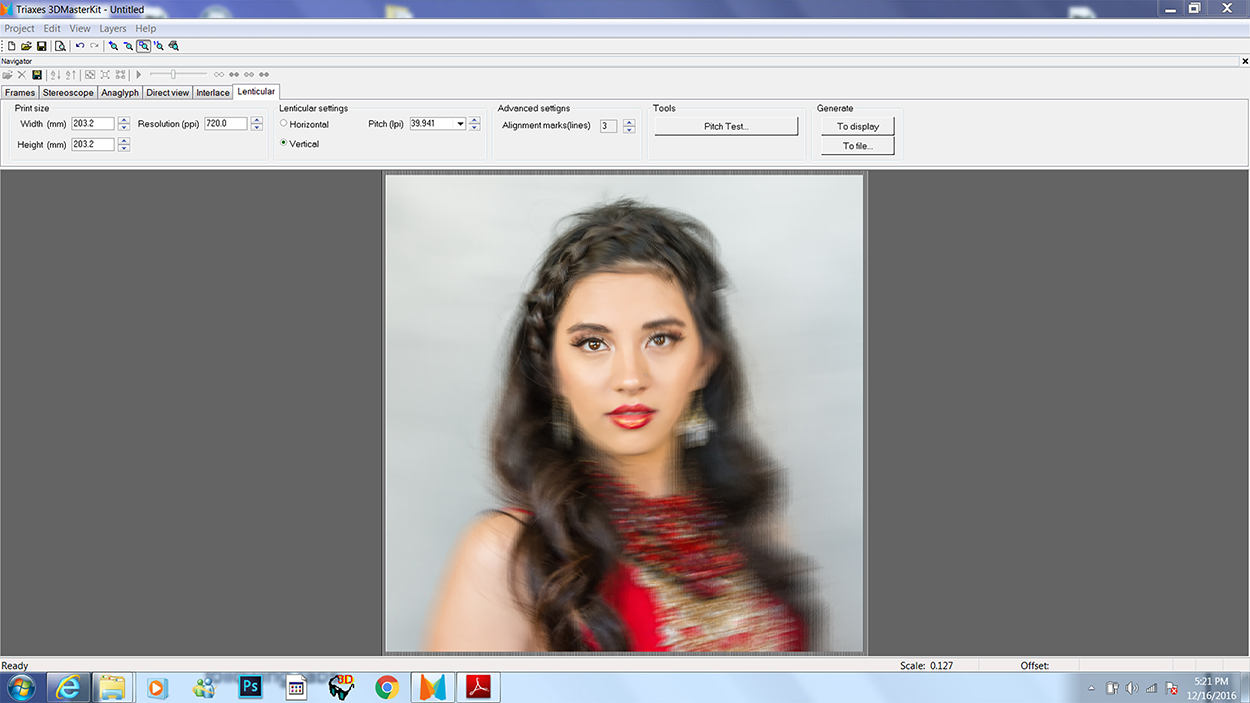
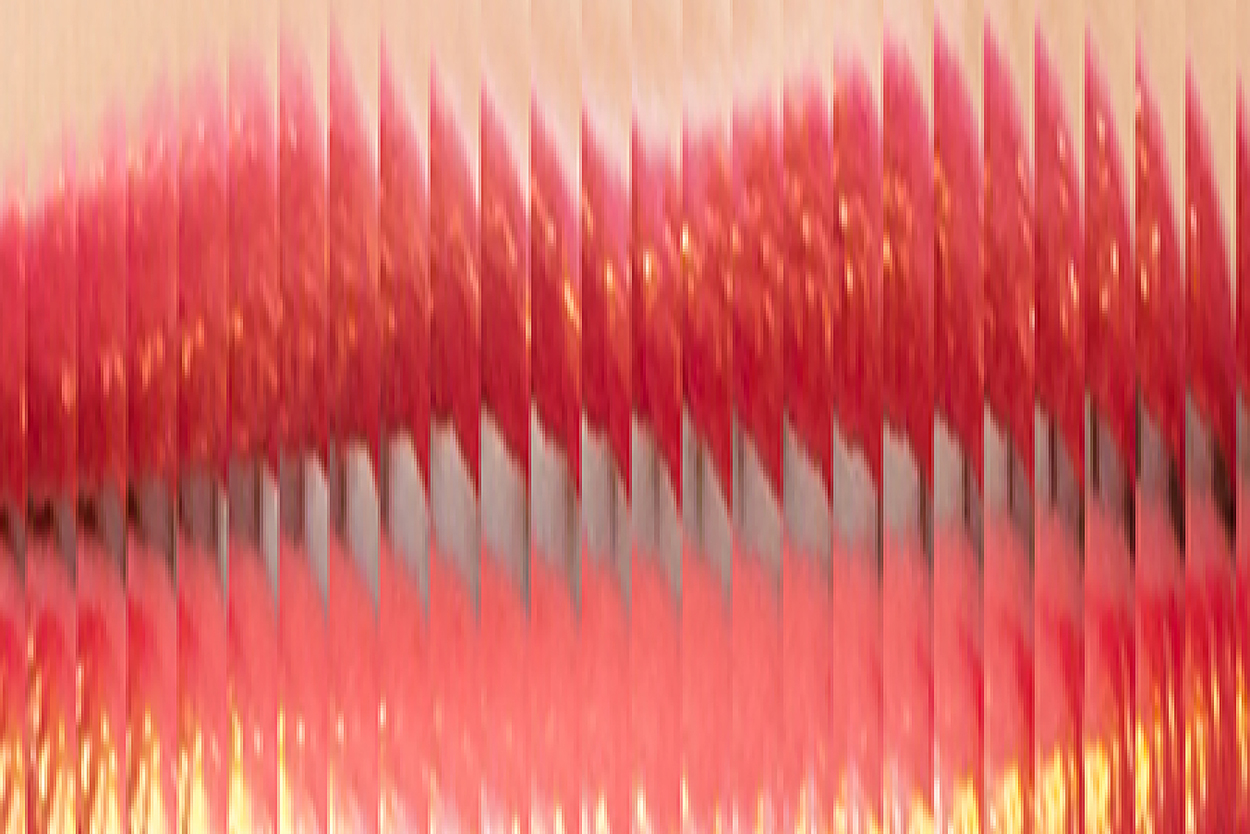
You can view GIF animations of my 3D lenticulars at my web site. I have also many videos of the lenticular print process and additional education material available on my YouTube-channel. I also recommend to visit the Facebook-group Lenticular Art, Printing, & 3D photography.
Michael Brown (Antioch, Illinois, USA)
Michael Brown is an independent artist who works from his home-based studio in Antioch, Illinois. Using a self-developed lenticular printmaking process, he creates kinetic, and/or 3D imagery using his own original photography and cinematography as source material.
Michael’s lenticular art is found in both public and private collections. His work is included in the Hyland Collection of American Photography, State of Illinois Art Collections well as other public, private, and government collections.
Michael travels the country throughout the year exhibiting his optical art at shows across the United States. He is also represented on the east coast by Memories Gallery on Cape Cod.
Website: MichaelBrown.com
Instagram-profile: artofmjb
YouTube-profile: MichaelBrownArtist

